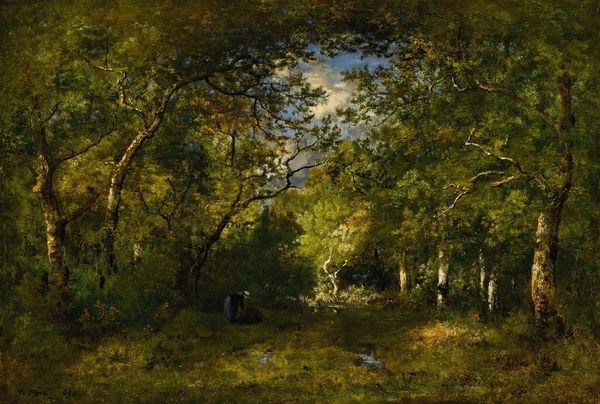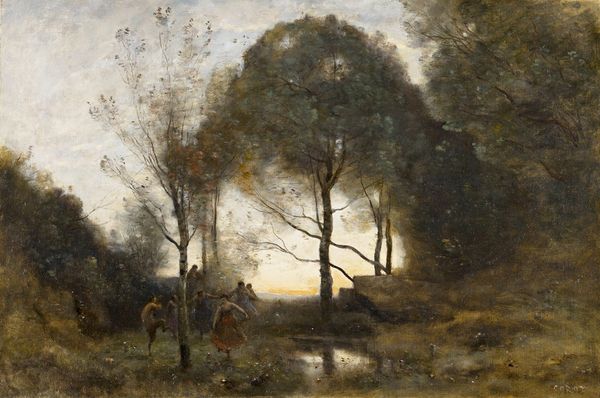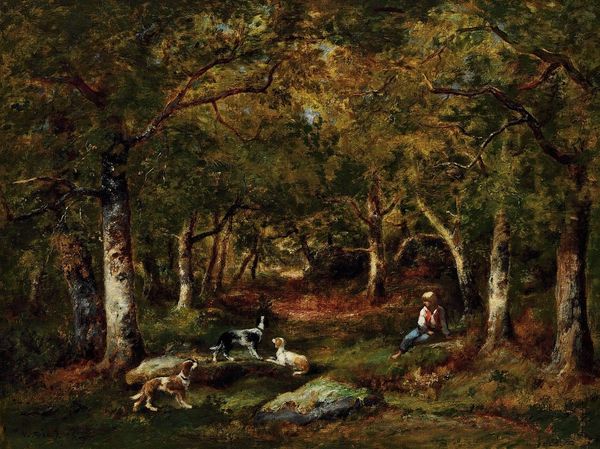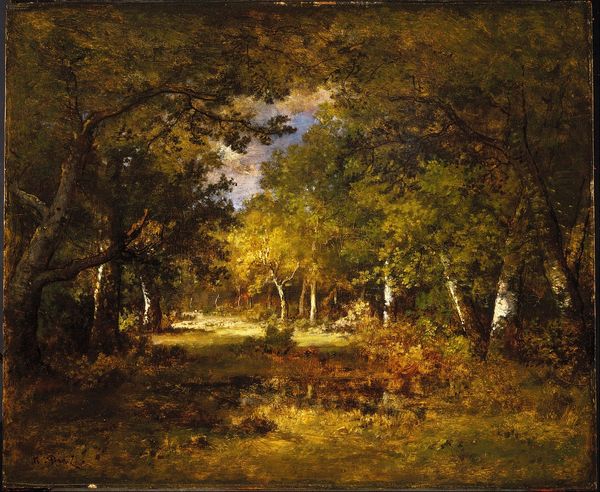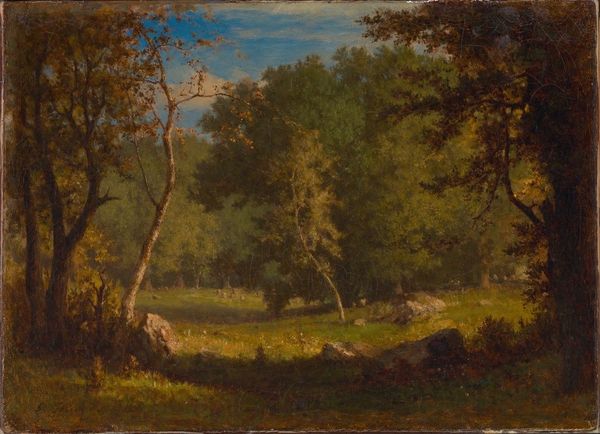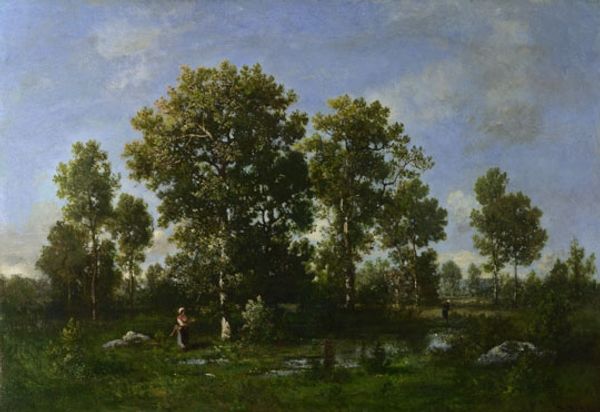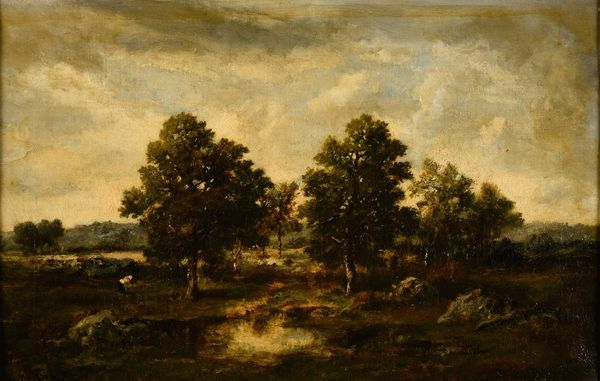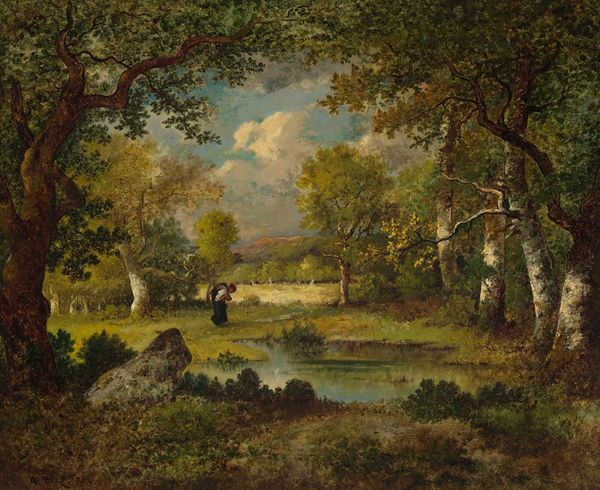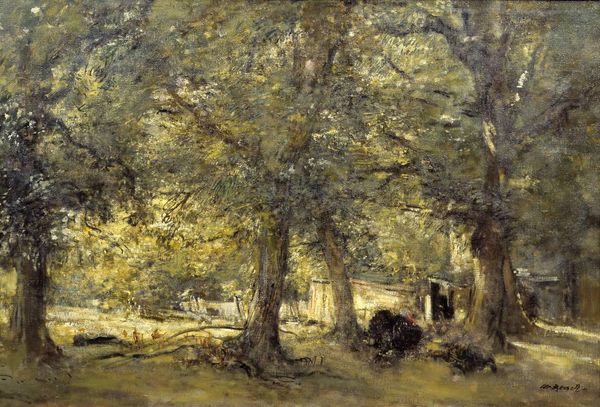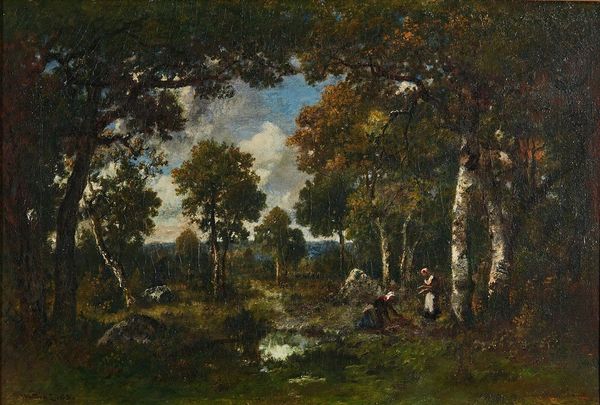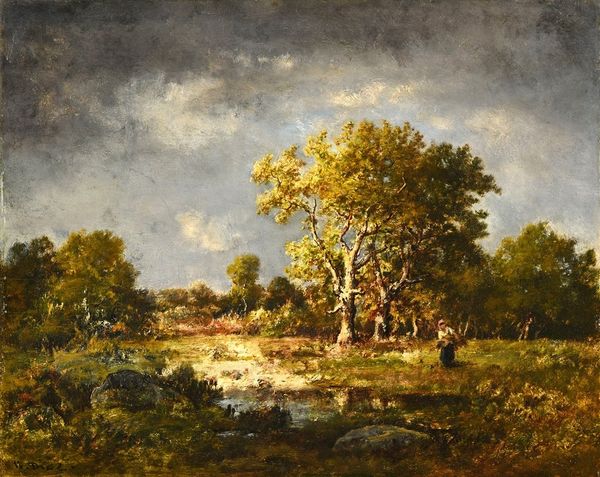
painting, oil-paint
#
painting
#
oil-paint
#
landscape
#
impressionist landscape
#
figuration
#
romanticism
#
genre-painting
Copyright: Public Domain: Artvee
Curator: Today we're observing "Sous-bois", an oil painting attributed to Narcisse Virgilio Diaz. What are your first thoughts? Editor: It's deeply immersive; the layers of foliage give the impression of stepping into a forest's embrace. There’s something ancient about that scene, a timeless quality perhaps evoked by its earthy palette. Curator: Diaz was quite interested in finding and portraying subjects away from urban settings, typical of genre painting, especially favoring scenes depicting the forest of Fontainebleau. Given his fascination with forested areas, it makes me wonder about the very nature of paint itself – its transformation from pigment mined or harvested from plants, combined with oils. Here, materiality mirrors the environment portrayed. Editor: Yes, and those earth tones speak volumes. Notice the almost symbolic use of light filtering through the canopy. Throughout history, forests have stood as emblems of mystery and transformation, even danger, offering refuge while obscuring true intent. What is hiding there? Curator: I am intrigued by your symbolic read, which is further enhanced by that obscured labor taking place by the pond – someone fetching water, accompanied by their dog, embedded within a greater economy, a chain of action within nature. It reveals the reciprocal relation we share. Editor: It's striking, and perhaps more important: that woman is dwarfed by nature. Doesn't she seem to be bowing before the immensity of the trees and sky? Curator: Interesting – but let's think about the materiality here; the use of pigment, oil and canvas. The forest supplies pigment; linseed produces oil; flax produces canvas; and finally human activity generates images, which can produce profit! Everything we observe on display relies on extracting from or impacting the natural environment, so do we worship it or exploit it? Editor: It's both, isn’t it? The painting acknowledges nature's power while domesticating it. What Diaz has constructed captures the romantic era's dual perspective; fearful awe mixed with ownership. He sees in the forest potential and resources. Curator: Acknowledging the history, I see it as highlighting the means and relationships to create an artwork, not merely focusing on just what an artist might want it to "mean". Thank you for joining me, my reading of artwork is changed again! Editor: And so is mine. Until our next encounter, happy looking.
Comments
No comments
Be the first to comment and join the conversation on the ultimate creative platform.
